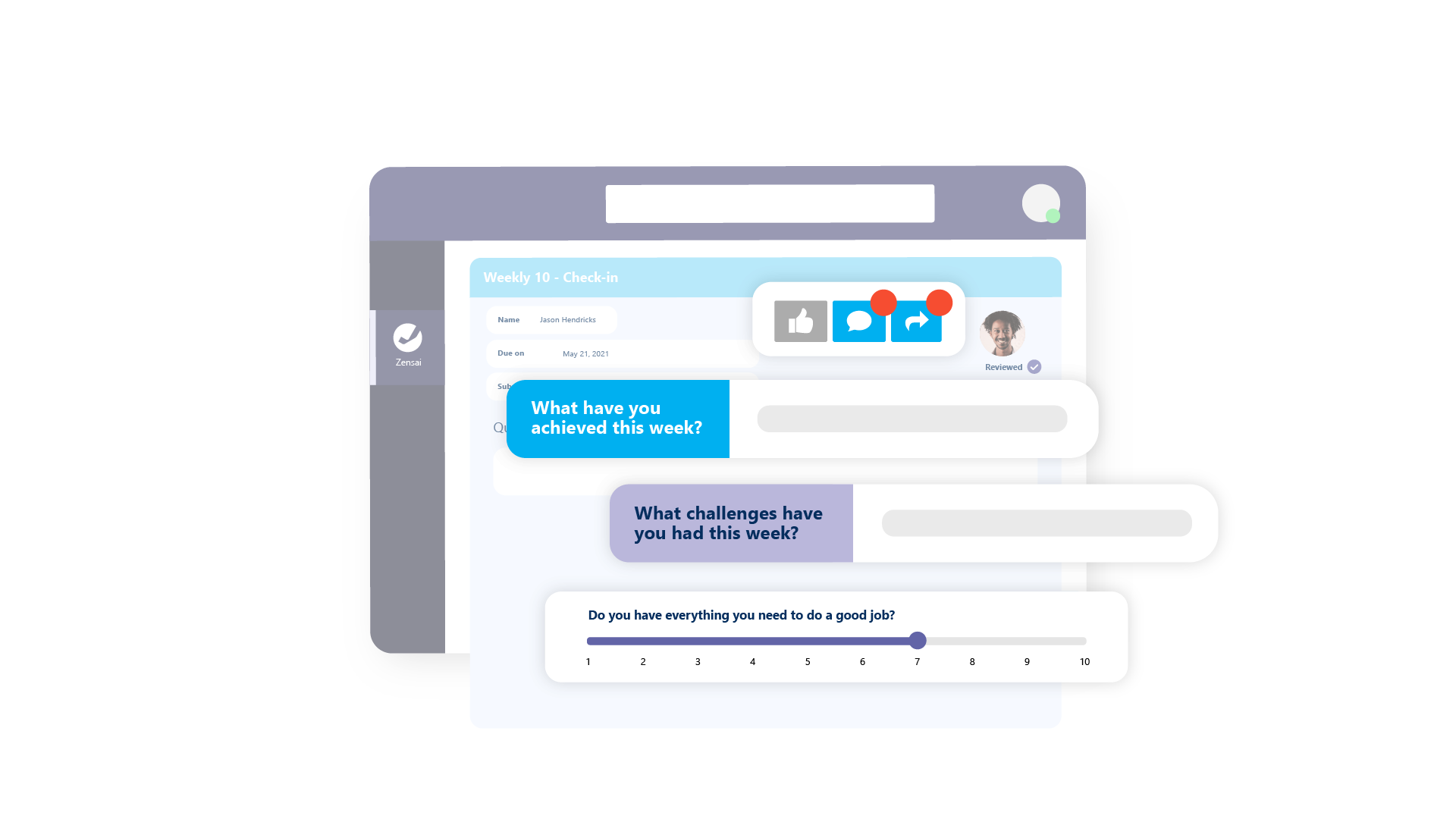Engage new employees from the start
Gone are the days of tedious paperwork, confusing processes, and overwhelming first days. It’s time to transform your stagnant onboarding process into an engaging, welcoming experience that sets your employees up for success from day one. Let’s show you how.

Give new hires a holistic employee onboarding experience with the full Human Success suite of tools.
Employee onboarding meets Human Success
Fuel-effective onboarding with our Human Success platform—the exclusive solution seamlessly integrated into Microsoft 365 and Teams. Empower your workforce with growth opportunities and continuous support made possible through innovative features like automated course enrollment, two-way feedback, and advanced reporting and tracking. Activate everyday human success by offering clarity on goals, supported by regular check-ins, performance conversations, and peer recognition.
Our AI-powered platform provides actionable insights and resources, ensuring new employees can make a real impact from the start. Looking to provide onboarding for hybrid or remote employees? Learn how to build an effective onboarding process for your whole organization.
Benefits of Effective Onboarding Read more
86%
Employee retention improvement
Research by Brandon Hall Group found that a great onboarding experience can improve employee retention by 86%. Offering the right training for employees in the tools they use daily can significantly boost the retention of new hires.
Onboard in Microsoft Teams2x
Turnover rate
Studies from Digitate show that a negative onboarding experience doubles the likelihood of job hunting. Don’t let your company suffer with high turnover rate due to ineffective employee onboarding.
Offer new employee feedback72%
Value manager conversations
According to Enboarder (2018), personal time with a manager is the secret sauce for 72% of new employees. It's not just a chat—it's the perfect opportunity for new hires to ask burning questions and for managers to dive into goal-setting magic.
Set performanceHow do you use AI tools for employee onboarding?
Discover a whole new dimension in employee onboarding with our cutting-edge AI capabilities. Our AI-powered platform seamlessly transforms mundane documents and videos into dynamic courses, complete with modules and quizzes, in a matter of seconds. Say goodbye to the hassle of manual content creation! But that’s not all—our course discovery feature makes it a breeze for new hires to explore and enroll in relevant courses. Powered by AI recommendations, employees effortlessly find courses tailored to their roles and career aspirations, setting them up for success at the start. Elevate your onboarding game with the magic of Zensai’s AI innovation!






